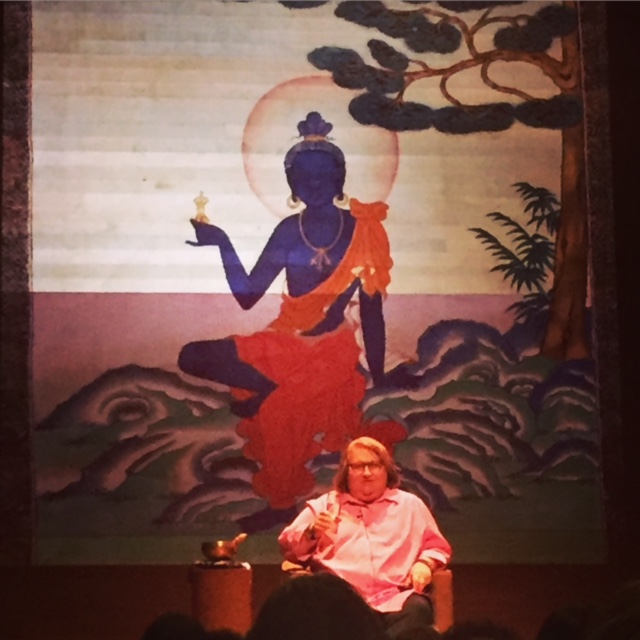
10 Mar What croissants have to do with meditation
“So you’re going all the way to the city to meditate for 45 minutes?” my husband asked me this morning. He was referring to a meditation session with Sharon Salzberg at the Rubin Museum of Art in New York City. It would take me 2 hours door-to-door to get there. Why would I do that if I could meditate at home just as well? First of all because I’d take any reason to go to Manhattan and I was meeting a friend there too. More importantly, it’s Sharon Salzberg we’re talking about!
As it is a gorgeous spring day I decide to walk the 25 blocks from the bus station to the museum. After all, it’s all about the journey and not the final destination, right?
Mrs. Salzberg’s pre-meditation talk is about “grasping”; referred to as one of the five hindrances in Buddhism. Grasping or clinging is considered to cause suffering, as it takes us away from being present and be content with whatever is there in the moment. It’s the classic mistake of thinking that we will be happy when we finally have the perfect job, more money, find our soulmate, loose weight, etc.
My mind wanders off to my own experience of grasping that morning. Last night I decided I’d go by my favorite bakery/cafe on my way to the museum to get some coffee and a croissant – one of my favorite treats in the city. Unfortunately it was lunch hour by the time I got there, so I wasn’t the only one who wanted to be served preferably swiftly. I waited anyway because I had been looking forward to that coffee and croissant the whole morning, even though I wouldn’t have time to eat it there and would have to take it to go. Apparantly I thought I’d be happier with the coffee and the croissant than without…
Since there is something ironic about rushing to get to a meditation session I do my best to make the 30 minute walk a mindful one. I only take bites of my croissant when I’m standing still at a red light, and I make an effort to actually look at, and acknowledge the presence of, the people walking in the opposite direction instead of avoiding their eyes. “Is that Whoopi Goodberg?! Oh, no it’s not. She sure looks like her though.” The mind is easily distracted. As Bhante Gunaratana writes in Mindfulness in Plain English: “Yet the ultimate goal of practice [of meditation] remains: to build one’s concentration and awareness to a level of strength that will remain unwavering even in the midst of the pressures of life in contemporary society.”
In order to stay present while meditating and not get lost in thoughts about what we’d like to do later that day, or next year, what we should have done in the past, or what we’d rather be doing in this moment – which is also grasping – Sharon Salzberg suggests to ask ourselves: “What am I feeling right now?” Being aware of what we are feeling brings us back to the here and now. While we meditate I notice I’m starting to write this blog in my mind. I kindly guide my attention back to my breath. Since I’m breathing anyway I may as well feel it, as Sharon instructs.
After the meditation, lunch with my friend and a wonderful visit of the museum, the walk back to the bus station seems a lot shorter than before. Is it because I’m not rushing or because I’m meditating in the midst of this ordinary activity?
In the bus on my way home I type these words in my phone. It is a mindful moment in which I recap my day, although it also takes me out of the present moment (which is a good thing in this case, hence I’m not acutely aware that I need to go to the bathroom while there isn’t one nearby. But that on a side note as this is food for another blog.) and I almost miss my stop. “The most important moment in meditation is the instant you leave the cushion. When your practice session is over, you can jump up and drop the whole thing, or you can bring those skills with you into the rest of your activities” writes Gunaratana. At least I am aware that I wasn’t fully present, I congratulate myself.
When I pull in our driveway and park the car, I take a moment to pause. I feel my breath. I feel happy to be home, right here and now. I am grateful to have had another day to practice.